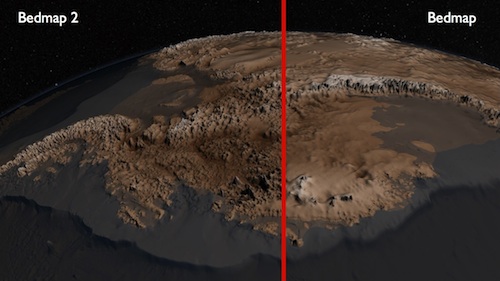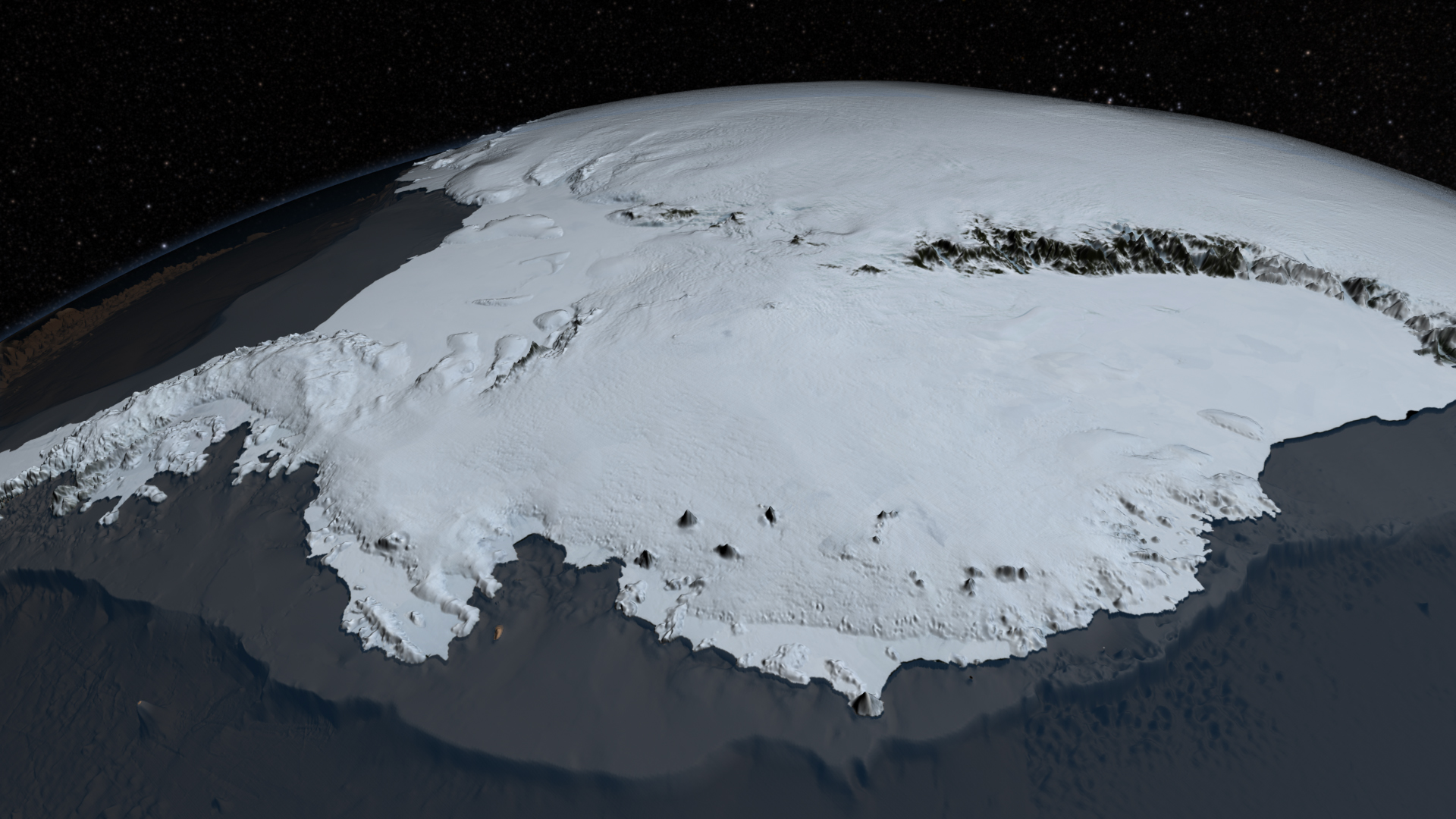
The frozen continent without ice: New Topography of Antarctica
One of the earth’s most alien landmasses, the Antarctic’s rocky surface, concealed by a vertical ice crust of up to more than 3km (average thickness 1,6km), was unveiled, at least digitally, at an unprecedented detail in spring 2013. Scientists have created a significantly improved map of the continent’s bedrock in the frame of the bedmap2 project led by the British Antarctic Survey. While the previous version ‘bedmap’, produced in 2001, gave a general overview of the Antarctic’s topography, the high spatial resolution of bedmap2 shows a landscape of mountain ranges, hills and vast plateaus dissected by canyons and gorges. Thus, it conveys the cartography of the bedrock terrain much closer to reality than ever portrayed. The project was prompted by the motivation to calculate the total extension and mass of ice that occurs in the Antarctic, which is essential to estimate the sea level rise induced by the melting of the polar ice. Therefore, the shape and structure of bedrock beneath the ice sheet was needed to know in detail. Bedmap2 relies on information from NASA’s IceSAT1 satellite (Cloud and Land Elevation Satellite) gathered between 2003 and 2009 and ice thickness data from the airborne based Operation IceBridge (radio echo sounding measurements, seismic techniques as well as satellite and cartographic data).
The new level of measurements delivers important information on variables that are of interest for research, particularly climate related study due to the key role of the Antarctic in this matter. Some new facts are:
- The volume of Antartic ice is 4,6% higher than previously assumed (27 million km³)
- Similar to previous estimates the melting of Antarctic ice shield would cause a 58m rise of sea level
- The mean depth of the bed beneath the grounded ice sheet is 72 m deeper than thought to date
- The ice sheet grounded on bed below sea level is increased by 10 % (which means that a considerable greater extent of bedrock extends below sea surface in bedmap2)
- The Bedmap 2 survey returned more accurate data on the lowest point on the Earth’s crust, which extends below the Byrd Glacier in Victoria Land at around 2,870 metres below sea level (around 400 metres lower than was previously thought).
The full survey of Antarctica via Bedmap2 is available for free via The Cryosphere, an open-access journal of the European Geosciences Union.
British Antarctic Survey – bedmap2

New topography of Antarctica: The image shows the differences between the most recent map of Antarctic’s rocky surface bedmap2 (left) and its previous version bedmap (right) from 2001. The topography in bedmap2 reveals much more detail than in bedmap.
Did you like this post on topography of Antarctica? Read more and subscribe to our monthly newsletter!






